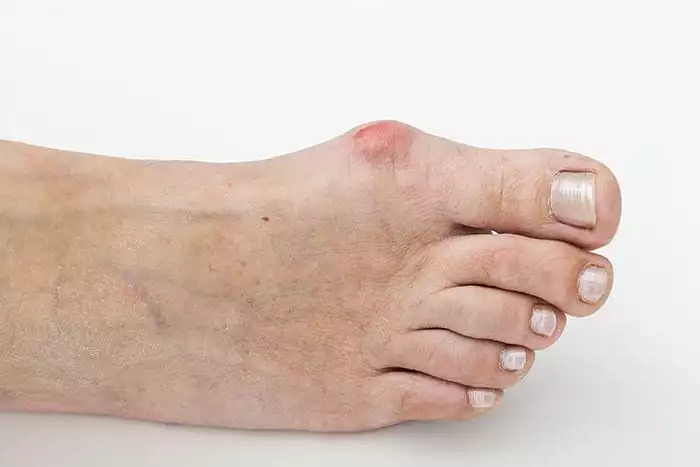Bunions: How to Deal with Bunions? Causes & Treatment
Bunions are a type of inflammation in the big toe joint that can cause it to become enlarged and bulbous. You’ve probably heard of bunions before. Maybe you know someone who has them, or perhaps you even have them yourself. But what are they, exactly? And how can you stop your feet from hurting so much?
Sometimes, the bunion will be so large that it pokes out from underneath the second toe. When that happens, you end up with what looks like a banana on your foot. Thankfully, there are quite a few ways to deal with bunions if you have them or notice that they’re beginning to develop. Read on for more information about this common problem and how to fix it!
What’s the Deal with Bunions?

A bunion is an inflammation of the big toe joint. This joint is naturally quite large, so sometimes, the inflammation can cause the toe to swell up and become even larger than normal. This can cause several other issues as well, including painful corns and calluses. Bunions also cause cosmetic issues, with the big toe pushing out and becoming deformed. Bunions are very common and are usually more of an aesthetic issue than anything.
While they can cause pain for some people, they don’t usually cause any serious medical issues. Many people live their entire lives with bunions and never experience any pain or problems from them. Bunions are generally caused by the way your foot is structured. If you have improper foot alignment, you may be at a higher risk of developing bunions. If you already have bunions, you can also put yourself at a higher risk of developing other foot problems, like Plantar Fasciitis.
Identifying a Bunion
As we mentioned above, a bunion is when the big toe joint becomes swollen and enlarged. This can cause the toe to become deformed, with the joint pushing out from the side of the foot. In some cases, the joint may even poke out from underneath the second toe. For a visual, you may want to look at photos online.
You can also examine your own foot if you think you might have a bunion forming. If your big toe is swollen and deformed, with the joint pushing out of place, you may have a bunion. A doctor can confirm the diagnosis and let you know how serious it is and what you can do to treat it.
Treating and Preventing Bunions
Most people who get bunions are simply unlucky and have a genetic foot structure predisposing them to them. In some cases, you can take steps to prevent or treat bunions before they become serious issues. Bunions can be treated with special shoe inserts and a type of shoe modification called a bunion overlay.
This special piece of fabric goes over the big toe and keeps it in place. Taking care of your feet, eating a healthy diet, and exercising regularly can lower your risk of developing bunions. In addition, you can keep an eye out for signs of bunions, like swelling and pain in your big toe joint.
Surgery to Correct a Bunion
You may need surgery if you have a severe bunion that doesn’t respond to treatment. However, this is usually the last resort for bunions, as it comes with some risks and complications. A bunion is corrected through an osteotomy, which involves cutting and repositioning the bone near the affected joint.
This reduces the size of the joint and the prominence of the bunion. You’ll likely need to wear a cast or bandage on your foot while it heals, followed by crutches or a cane while you regain your strength. Bunions corrected through surgery will never fully go away and will likely return if you don’t change your walking habits and footwear.
Causes and Risk Factors of Bunions
We’ve already discussed that bunions are caused by improper foot alignment. This misalignment can happen in just about anybody, though, and doesn’t necessarily mean you have flat feet. It’s more common in people with high arches, as the foot cannot support itself properly. In some cases, bunions can be a genetic disorder.
If you have a family history of bunions, you may be more likely to develop them. Other risk factors for bunions include having high arches and being overweight.
Bottom Line: Symptoms of Bunions
Bunions are common foot issues that affect many people. They’re usually not serious, but they can cause pain and discomfort. You can treat a bunion with surgery, special shoe inserts, or changes to your footwear and walking habits. If you get a bunion, you can also try to prevent it from worsening. If you’re diligent about taking care of your feet and wearing the right footwear, you can keep your bunions at bay.
Source –


